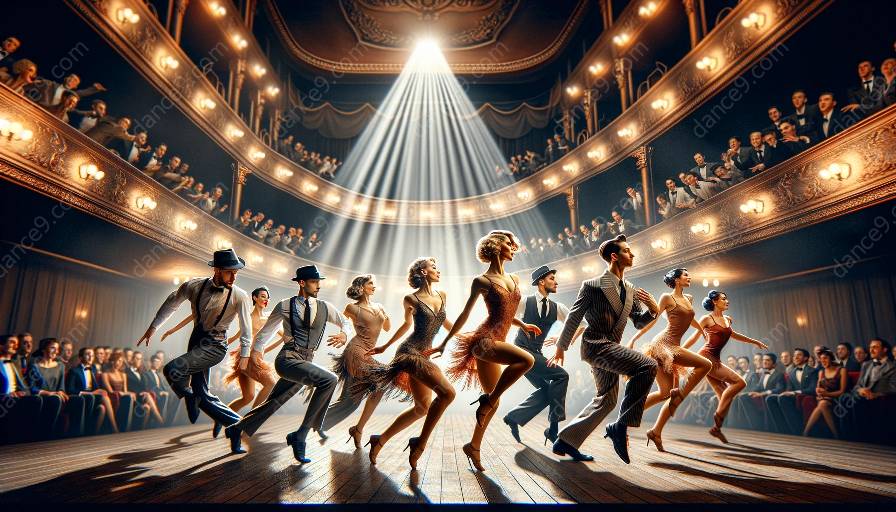When we think of jazz, our minds often drift to the music – the syncopated rhythms, the improvisation, the soulful melodies. However, the world of jazz encompasses more than just sound; it also extends into the realm of dance, where the infectious rhythms and expressive movements come together in a harmonious synergy.
Jazz music and dance share deep-rooted historical and cultural connections that continue to influence each other in profound ways. This interplay between the two art forms has not only shaped the evolution of jazz but has also contributed significantly to the development of various dance styles and techniques.
The Historical Ties
Tracing back to the early 20th century, jazz music and dance evolved hand in hand, particularly in the vibrant cultural landscape of African American communities. The pulsating beats and spirited melodies of jazz provided the perfect backdrop for dancers to express themselves with freedom and individuality. From the exuberant Charleston of the 1920s to the elegant movements of the Lindy Hop and the energetic routines of the swing era, jazz music fueled the evolution of dance forms that mirrored the exuberance and dynamism of the genre.
Improvisation and Syncopation
One of the most compelling connections between jazz music and dance lies in the shared elements of improvisation and syncopation. Both jazz music and jazz dance embody the spirit of spontaneity and creativity, as musicians and dancers respond to each other in real-time, creating a dialogue of expression through movement and sound. This synergy fosters a sense of collaboration and connection, as dancers interpret the musical rhythms with their bodies, infusing the movements with the essence of jazz.
Cultural Influences and Evolution
Jazz music and dance have been deeply influenced by the cultures and traditions of the communities that have embraced them. From the birthplace of jazz in New Orleans to the bustling streets of Harlem and the vibrant clubs of Chicago, the interplay of diverse cultural elements has shaped both the music and the dance forms associated with jazz. The fusion of African, European, and Caribbean influences has resulted in a rich tapestry of rhythms and movements that continue to inspire and captivate audiences around the world.
Inspirational Synergy
Studying the interdisciplinary connections of jazz music and dance can provide a wealth of inspiration for both educators and students in jazz and dance classes. By delving into the historical and cultural ties between the two art forms, instructors can enrich their curriculum with a deeper understanding of the contextual origins of jazz and its impact on dance styles. Moreover, students can explore the rhythmic intricacies of jazz music and translate them into expressive movements, gaining a comprehensive insight into the holistic nature of jazz as a performing art.
Fostering Creative Expression
The interdisciplinary connections of jazz music and dance offer a platform for fostering creative expression and artistic exploration. By integrating the study of jazz music with dance classes, educators can cultivate an environment where students can engage in cross-disciplinary practices, honing their skills in musicality, improvisation, and choreography. This multidimensional approach empowers students to develop a nuanced understanding of the interconnectedness of music and dance, thereby nurturing a deeper appreciation for the expressive possibilities inherent in both art forms.
Embracing Diversity and Inclusivity
Jazz music and dance have been at the forefront of embracing diversity and inclusivity, serving as vehicles for cultural exchange and celebration. By acknowledging the interdisciplinary connections of jazz music and dance, instructors can create inclusive spaces within jazz and dance classes, encouraging students to explore and embrace a myriad of dance styles and musical influences. This approach not only promotes cultural awareness but also fosters a sense of unity and solidarity among students, as they collectively celebrate the diversity of expressions inherent in jazz music and dance.
Conclusion
The vibrant tapestry of jazz music and dance is woven with intricate threads of history, culture, and creativity. The interdisciplinary connections between these two art forms continue to inspire and enrich each other, offering a boundless wellspring of artistic exploration and expression. By recognizing the profound influences and synergies between jazz music and dance, educators and students in jazz and dance classes can embark on a journey of discovery that transcends the boundaries of individual disciplines, forging a deeper appreciation for the unifying power of music and movement.













































































